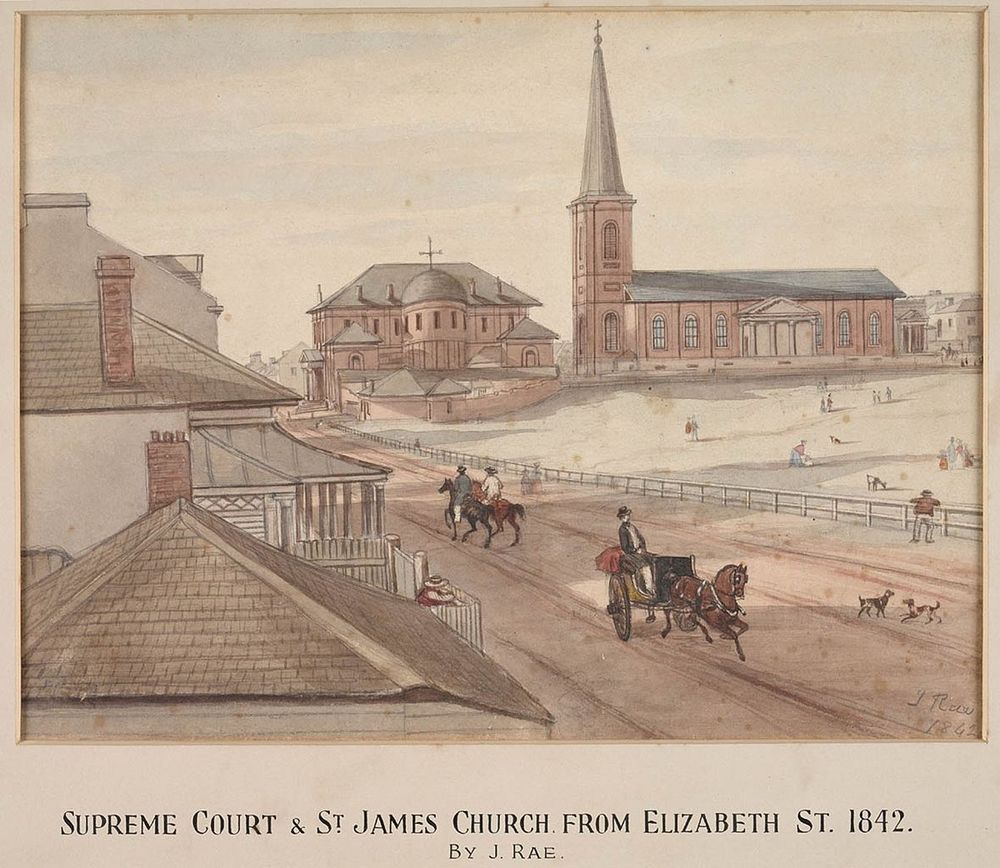Australia owes many of its former convicts, who, through their ability and determination, made substantial contributions to the development of the colony and the nation as a whole. Among these was Francis Greenway, an architect by profession, who arrived as a convict in 1814 for the crime of forging documents. He soon came to the attention of Governor Lachlan Macquarie and became the first government architect of New South Wales. Francis Greenway is credited of producing some of the finest colonial buildings in Australia including St. James Church and Supreme Court in Sydney City and St Matthew's Church in Windsor.

Francis Greenway on the first Australian 10-dollar note.
Greenway was an architect of some eminence in Bristol, until his firm went bankrupt. Under great financial stress, Greenway took a desperate step that he shouldn’t have—he forged some documents. In 1812, Greenway was found guilty and sentenced to death, as was typical at that time. This sentence was later commuted to transportation to the colony of New South Wales for 14 years.
On arrival in the colony in 1814, Greenway presented letters of recommendation and a portfolio of his work to the Governor of New South Wales, Lachlan Macquarie. During the initial meeting Macquarie sought to test Greenway and asked him to copy a design of a town hall and courthouse from a pattern book. Greenway was offended at the request and replied that his deigns were superior to those in the book. Nevertheless, Greenway offered to copy the drawing as requested, but lectured that “it is rather painful to my mind as a professional man to copy a building that has no claim to classical proportion and character.”

Photo: Wikimedia
Macquarie then called upon Greenway to report on the Rum Hospital, that was being built at the time. Greenway was critical of the building techniques and design, and suggested extensive and expensive alterations. Impressed by Greenway’s mettle, Macquarie appointed Greenway the civil architect and assistant engineer in 1816. His first work for the government was the design of a lighthouse, known as the Macquarie Tower, on the south head of Port Jackson. Macquarie was so pleased with it that he presented Greenway with conditional pardon.
After the success of this project Greenway went on to build many significant buildings in the new colony. His work’s included Hyde Park Barracks, extensions to First Government House, St Matthew's Church in Windsor, and St James' Church in Sydney, among others. In 1819, after he had designed a large female factory at Parramatta and a large barracks and compound for male convicts, Macquarie presented Greenway with full pardon.

Maquarie Lighthouse.
Although Greenway was a talented architect, he was not an amiable person. His arrogance made him fell out of Macquarie’s favor and he made many enemies. When Commissioner John Thomas Bigge was sent to Sydney to look into the affairs of the colony, Bigge was critical of the amount of time and money wasted on overly ambitious and unnecessary public works. He cancelled many of Greenway's projects as being too extravagant, and interfered with others. Macquarie’s successor as Governor, Sir Thomas Brisbane, eventually had him dismissed from his position in 1822.
Greenway continued in private practice, but without the patronage of Macquarie, he never recovered his former prominence. He remained bitter about his treatment and wrote several articles and letters for the local press. Desperate for work, Greenway started appealing the public. An advertisement in the Sydney Gazette in 1835 read: “Francis Howard Greenway, arising from circumstances of a singular nature is induced again to solicit the patronage of his friends and the public.”

Hyde Park Barracks. Photo: Wikimedia
Greenway died of typhoid in 1837, and was buried in an unmarked grave in East Maitland.
Despite his tragic end, Greenway’s legacy lives on in the dozens of buildings that he designed around Sydney, including the James Church, which was chosen as one of Australia’s only two man-made ‘treasures’ by Dan Cruickshank in the BBC series Around the World in 80 Treasures.
In 1966, when Australia changed their currency from the pound to dollar, on the first Australian $10 note printed, Greenway’s face was shown along with public buildings he helped construct. This was quite the irony because Greenway was a convicted forger. Greenway’s image on the banknote remained until 1993, when he was replaced by Banjo Paterson and Dame Mary Gilmore on new polymer notes.












The years in the last paragraph seem wrong. They make it sound like the 2nd version came 33 years before the first version of the dollar bill.
ReplyDeleteIt should have been 1993. The error is now corrected.
Delete